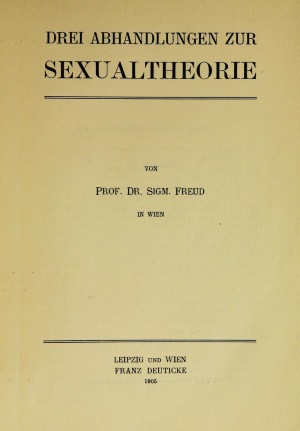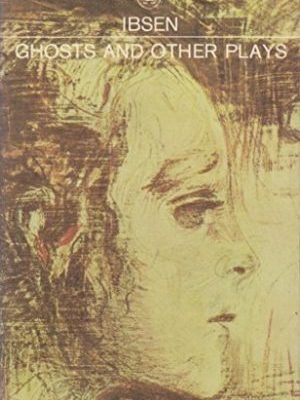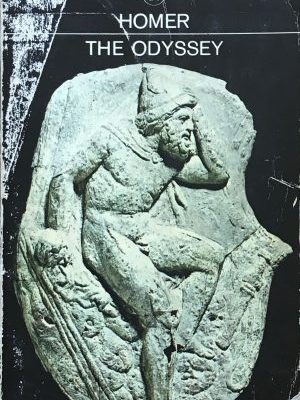Three Essays on the Theory of Sexuality by Freud
8 $
- نام کتاب: Three Essays on the Theory of Sexuality
- نام فارسی: سه مقاله در ارتباط با تئوری سکشوآلیتی
- نویسنده: زیگموند فروید
- ناشر: Imago
- نوع جلد: Hard Cover
- وضعیت: در حد نو
1 عدد در انبار
Three Essays on the Theory of Sexuality by Freud
کتاب Three Essays on the Theory of Sexuality نوشته زیگموند فروید (Sigmund Freud) یکی از آثار بنیادین در روانکاوی است که نظریههای فروید درباره رشد و عملکرد جنسی انسان را ارائه میدهد. این کتاب برای اولین بار در سال ۱۹۰۵ منتشر شد و یکی از مهمترین متون در تاریخ روانشناسی و مطالعات جنسی محسوب میشود.
مروری بر محتوا Three Essays on the Theory of Sexuality by Freud
فروید در این کتاب تلاش میکند تا ماهیت تمایلات جنسی انسان را توضیح دهد و نشان دهد که رفتارهای جنسی از دوران کودکی آغاز میشوند و در طول زندگی تکامل مییابند. او سه مقاله اصلی را در این کتاب ارائه میدهد:
- انحرافات جنسی – بررسی رفتارهای جنسی که از هنجارهای اجتماعی فاصله دارند.
- تمایلات جنسی در کودکان – ارائه این نظریه که تمایلات جنسی از دوران نوزادی وجود دارند و تدریجاً تکامل مییابند.
- تحولات بلوغ – توضیح اینکه چگونه رشد جنسی از کودکی تا بزرگسالی طی یک فرآیند پیچیده تغییر میکند.
موضوعات کلیدی Three Essays on the Theory of Sexuality by Freud
- نظریههای فروید درباره تمایلات جنسی و رشد آن از کودکی
- تحلیل مفهوم سرکوب و تأثیر آن بر رفتار جنسی
- روانکاوی و تأثیر ناخودآگاه بر امیال جنسی
- بررسی انحرافات جنسی و علل روانشناختی آنها
- رابطه بین لذت، اضطراب و تمایلات جنسی
چرا کتاب Three Essays on the Theory of Sexuality را مطالعه کنیم؟
- اثری کلاسیک و تأثیرگذار در روانکاوی و مطالعات جنسی است
- درک عمیقی از نظریههای فروید درباره رشد روانی-جنسی ارائه میدهد
- برای دانشجویان روانشناسی، جامعهشناسی و علوم انسانی مفید است
- تأثیر زیادی بر نظریههای مدرن روانکاوی و جنسیت داشته است
راهنمای خرید کتاب Three Essays on the Theory of Sexuality by Freud
- این کتاب در بسیاری از فروشگاههای بینالمللی از جمله آمازون (Amazon) و بارنز اند نوبل (Barnes & Noble) موجود است.
- برخی از کتابفروشیهای ایران که کتابهای زبان اصلی را چاپ میکنند، ممکن است نسخهای از آن را داشته باشند.
- ما یک نسخه نفیس از نسحه اوریجینال را داریم. برای هماهنگی خرید با ما تماس بگیرید.
قیمت حدودی کتاب Three Essays on the Theory of Sexuality by Freud
- نسخه چاپی: بین ۲۰ تا ۴۰ دلار
- نسخه الکترونیکی: بین ۱۰ تا ۲۰ دلار
- نسخه دست دوم: بین ۱۵ تا ۳۰ دلار (بسته به کیفیت)
جمعبندی Three Essays on the Theory of Sexuality by Freud
کتاب Three Essays on the Theory of Sexuality یکی از آثار پایهای در روانکاوی است که نظریههای فروید را درباره تکاملی بودن تمایلات جنسی از کودکی تا بزرگسالی مطرح میکند. این اثر برای دانشجویان روانشناسی، پژوهشگران علوم اجتماعی و علاقهمندان به روانکاوی توصیه میشود و همچنان در مطالعات مدرن درباره جنسیت و رفتار انسانی تأثیرگذار است.
| وزن | 0.3 کیلوگرم |
|---|---|
| ابعاد | 22 × 14 × 1.5 سانتیمتر |












نقد و بررسیها
هنوز بررسیای ثبت نشده است.